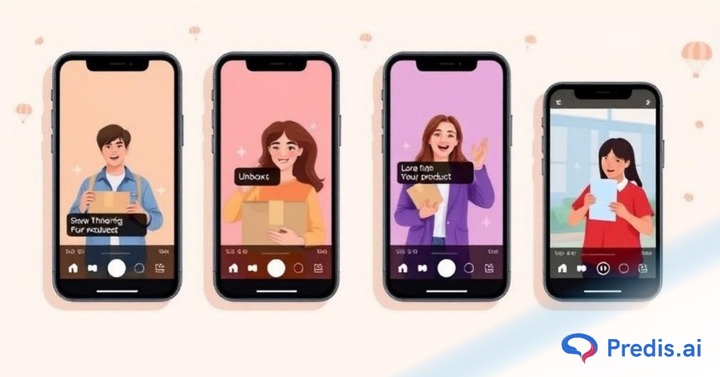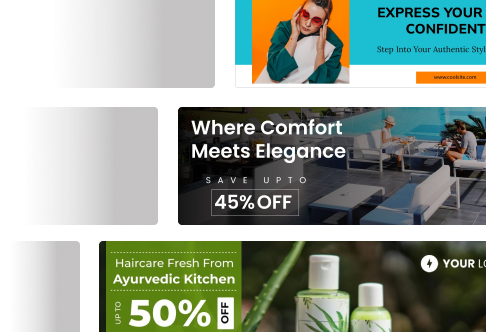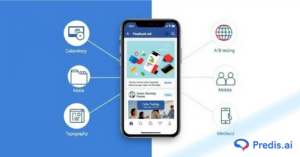Most drop-shipping ads look the same. Polished visuals, generic voiceovers, and flashy discounts that people scroll right past. What’s cutting through the noise now isn’t high-budget ads, but something much simpler. It’s UGC videos for drop-shipping products.
These are real, raw, human-made clips that show someone actually using your product, an honest reaction, a quick demo, a before-and-after moment. Unlike the usual ad that feels staged, user-generated content (UGC) feels authentic. It builds connection and trust, which is exactly what drop-shipping brands often struggle to earn.
For drop-shippers, this shift is massive. UGC bridges the gap between skepticism and purchase confidence. It acts as social proof and adds a layer of credibility that no product description or paid ad can replicate. Plus, it helps fight ad fatigue, people stop tuning out your brand because the content looks like something they’d actually watch.
In this guide, we’ll break down how to make UGC videos for drop- shipping products that grab attention, convert browsers into buyers, and give your store a competitive edge. You’ll learn how to plan, shoot, edit, and scale authentic UGC that actually sells, even if you’re starting from scratch.
TL;DR 🖋
UGC videos are real, relatable content that builds trust for drop-shipping products. Unlike polished ads, they show products in real-life use and connect with audiences authentically.
Key Steps to Make UGC Videos for Drop-shipping Products:
- Understand UGC
- Plan & Strategize
- Shoot Videos
- Edit & Polish
- Source Creators
- Publish & Distribute
- Measure & Optimize
Understanding UGC Videos for Drop-shipping Products
Before you start creating, it’s important to understand what actually counts as a UGC video and why it’s become such a game-changer for drop-shipping brands.
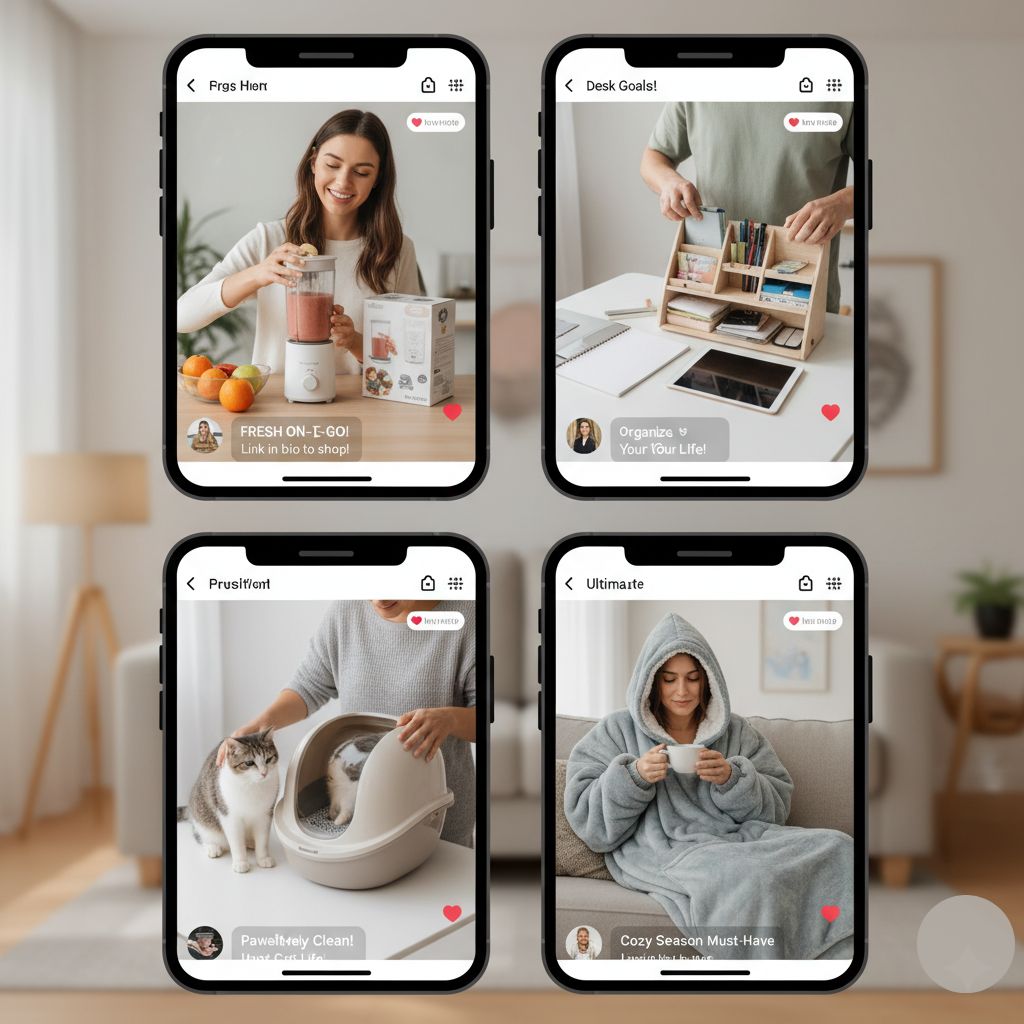
I. What Qualifies As A UGC Video?
A UGC video is any piece of content created by a real person, not a brand or production team that shows genuine use or reaction to a product. For drop-shipping, this could look like:
- A testimonial where someone talks about how your product helped them
- An unboxing video showing first impressions
- A short in-use demo highlighting the product’s main features
- A quick behind-the-scenes clip of someone using it in daily life
These clips feel personal and unscripted, which instantly makes them more believable than any slick ad.
II. Organic UGC vs. Paid UGC creators
There are two main types of UGC you can use:
- Organic UGC happens naturally — customers post reviews or share experiences on social media without being asked. It’s authentic but unpredictable, and you might not always get the visuals or tone you want.
- Paid UGC creators, on the other hand, are individuals you hire to create content that still feels organic. They’re not traditional influencers with huge followings, they’re skilled at making relatable videos that mimic real customer experiences.
Both types have value. Organic UGC builds trust through spontaneity; paid UGC gives you control over messaging, visuals, and brand alignment.
III. Why UGC Videos Work Better Than Polished Ads?
Here’s what really makes UGC videos for drop-shipping products outperform traditional types of ads:
- Authenticity: People trust other people more than they trust brands.
- Relatability: Viewers see themselves in the creator’s shoes, making the product feel attainable.
- Native style: UGC blends seamlessly into social feed, it doesn’t scream “ad.”
- Low production cost: You don’t need fancy equipment to make an impact.
In short, it feels real, and that’s exactly what today’s buyers respond to.
Key Metrics & Benchmarks To Track
When you start using UGC videos, focus on data that shows real engagement and conversion. Key benchmarks include:
- Views & watch time: How long people actually stay tuned in
- Engagement rate: Likes, comments, shares — signs your video feels genuine
- Click-through rate (CTR): How often people move from the video to your store
- Conversion lift: Whether sales or add-to-cart actions increase when UGC is used
Planning & Strategy: Before You Shoot
Making UGC videos for drop-shipping products isn’t about grabbing a phone and hitting record. The best ones start with a clear plan. A little strategy upfront can save you from wasting time and money on videos that don’t convert.

1. Choosing Which Products To Feature
- Not every item in your store deserves a UGC video. Start with your winning product, the ones already getting consistent sales or strong engagement. These are proven performers that will benefit from more social proof.
- If you’re testing new products, UGC can also help validate interest early. Just be selective. Pick products that solve a visible problem or create an emotional reaction, something people can easily demonstrate or talk about on camera.
2. Know your audience and their pain points
Every UGC clip should speak directly to a specific person. Ask:
- Who’s buying this product?
- What problem are they trying to fix?
- What doubts or hesitations might stop them from buying?
When your video touches those points, showing how your product fits naturally into someone’s life, it stops feeling like marketing and starts feeling like a recommendation.
3. Picking the right video format for each platform
Each platform has its own rhythm. A single UGC video can be repurposed in multiple ways if you plan correctly.
- TikTok & Reels: Fast-paced, raw, and trend-driven. Focus on reactions, quick demos, or “TikTok made me buy it” angles.
- Facebook: Works well for testimonials, before-and-after videos, or short story-based ads.
- YouTube Shorts: Great for deeper demos or unboxing videos where people want to see more detail.
The trick is to keep the video native to the platform — it should blend in, not look like a recycled ad.
4. Define the goal of each UGC video
Every video should serve a purpose. Decide this before you shoot:
- Are you trying to drive clicks to your store?
- Do you want to show how the product works?
- Are you comparing it to a competitor or demonstrating quality?
- Or is it a testimonial meant to build trust?
When you define your goal early, you can structure your shots and dialogue around it instead of trying to fix the story later in editing.
5. Craft a simple creative brief or script prompt
Even authentic videos need direction. A short creative brief helps creators know what to highlight without sounding scripted. Include:
- The product’s name and main benefit
- Key features or problems it solves
- Any phrases or angles to mention (“lightweight,” “saves time,” etc.)
- Call-to-action (what you want viewers to do next)
Shooting UGC Videos: Tips & Best Practices
Now that your plan is ready, it’s time to bring it to life. The good news? You don’t need a fancy studio or professional crew to make UGC videos for drop-shipping products that look great and sell. What matters most is clarity, energy, and authenticity. Let’s break it down.
1. Gear you actually need
Keep it simple. A smartphone with a good camera is more than enough. Add a few basic tools to make your videos cleaner and easier to watch:
- Stabilizer or tripod – keeps your shots steady and professional-looking
- Clip-on mic or wireless lav mic – clear audio instantly boosts credibility
- Ring light or softbox – use when natural light isn’t available
You don’t need expensive gear; you just need tools that make your content easy to see and hear.
2. Framing, composition & orientation
- Always shoot vertically for platforms like TikTok, Reels, and YouTube Shorts, that’s where most UGC performs best.
- Keep the focus tight on the product and the person using it. Use mid-shots for talking clips and close-ups for product action. Avoid cluttered backgrounds that distract from what matters.
3. Audio and background: keeping it real but clear
- UGC should sound natural, not like it was recorded in a sound booth. But “natural” doesn’t mean noisy. Choose quiet environments and make sure your mic isn’t picking up echoes or traffic.
- If you’re filming indoors, add a little ambient sound to keep it human, maybe the sound of unpacking or someone laughing. Those imperfections make viewers feel like they’re watching a real moment.
4. Use natural lighting or simple setups
- Lighting can make or break your video.
- Natural light is your best friend, film near a window or outdoors. If that’s not possible, use a ring light at eye level for even, flattering lighting.
- The goal is to make the product (and person) look true-to-life, not overexposed or filtered.
5. Short, punchy intros
- You’ve got three seconds to grab attention, use them wisely.
- Start with action or emotion: a strong reaction, a “you won’t believe this” tone, or the product already in use.
- Skip long intros or explanations; hook the viewer before they scroll.
6. Showing the product in action
- Static shots don’t sell. Show the product being used. From unboxing, applying, assembling, wearing, testing, reacting.
- Combine “talking head” clips (where someone explains or reviews) with cutaways of the product doing its job. This mix keeps your video dynamic and engaging.
7. Keep it casual — imperfections sell
- The beauty of UGC videos for drop-shipping products is in their imperfection.
- Don’t worry about flawless takes. A little background noise, a stumble, or laughter makes it real.
- Viewers trust what feels spontaneous more than what looks scripted.
8. Add B-roll, cutaways & transitions
- B-roll — extra clips showing the product from different angles or contexts helps your video flow better. Simple transitions (swipes, fades, zooms) keep attention without looking over-edited.
- Think of it like storytelling: your main clip says what, the B-roll shows how.
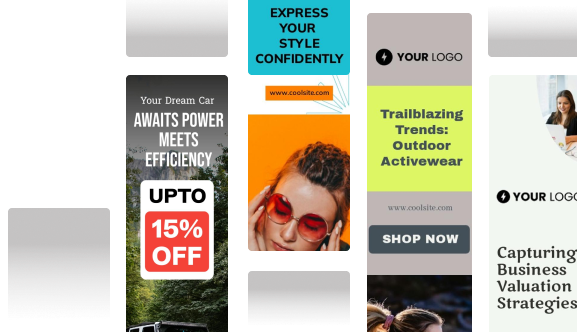
Editing & Polishing UGC Videos
Once you’ve shot your clips, editing is where your UGC videos for drop-shipping products really come to life. The goal isn’t to make a Hollywood production, it’s to make the video clear, engaging, and still authentic.
1. Tools & apps you can use
You don’t need expensive software to create high-performing UGC. Some great options include:
- Mobile editors: CapCut, InShot, VN Video Editor — easy for quick edits and captions
- Desktop tools: iMovie, DaVinci Resolve, Adobe Premiere Rush — slightly more advanced but still beginner-friendly
- Optional templates: Many apps offer ready-made UGC-style templates to speed up editing
Pick a tool that matches your comfort level and output needs.
2. Maintaining a “UGC feel”
Remember, the charm of UGC is its authenticity. Avoid over-polishing: don’t add heavy filters, overly staged transitions, or unnatural color grading. Keep it real, viewers respond to content that feels like it was created by another customer, not a marketing team.
Editing tips
- Keep cuts fast: Short attention spans demand snappy edits; drop unnecessary pauses.
- Overlay text & captions: Highlight key features or benefits, especially since many people watch without sound.
- Background music: Choose subtle, licensed tracks that enhance the mood without overpowering the speaker.
- Subtitles: Always add them — they improve accessibility and retention.
3. Add product overlays carefully
Popups or overlays (price, key features, CTA) can be useful, but don’t clutter the screen. Place them strategically where they reinforce what’s being shown rather than interrupt the flow. Less is more.
4. Export settings & aspect ratio
Export videos in the correct format for the platform:
- Vertical (9:16) for TikTok, Instagram Reels, and YouTube Shorts
- 1080p HD for clarity
- MP4 format for compatibility
Check the file size — large files can slow upload, small files can look pixelated.
Sourcing UGC Creators / Collaborators
Creating UGC videos for drop-shipping products doesn’t have to fall entirely on your shoulders. Working with creators whether real customers, micro-influencers, or even AI tools can help you scale faster while keeping content authentic.

1. Approaches to sourcing UGC
- Send free products to micro-creators: Identify micro-creators or loyal customers who already align with your brand. Offer them a free product in exchange for a short video or review. This approach is cost-effective and often yields authentic, relatable content.
- Use UGC marketplaces or platforms: Platforms like Flocksy, UserGrow, or IZEA connect brands with creators specifically for user-generated content. This is useful if you need a consistent flow of videos without sourcing each creator individually.
- Use AI-generated UGC-style videos: When you can’t find enough real creators, AI tools can help create realistic, UGC-style clips. These work well for testing or supplementing your library, but they should never fully replace authentic human content.
2. How to brief creators?
Provide a simple, clear brief that guides without over-scripting. Include:
- Product name and core benefits
- Key points to highlight (features, use cases, problems it solves)
- Tone and style (casual, authentic, fun)
- Flexible vs strict instructions: allow room for their natural personality, but specify any must-have elements like showing the product in use or mentioning a key benefit
3. Compensation models
Creators can be motivated in several ways:
- Free product + small payment: Common with micro-creators and loyal fans
- Royalty or commission: Pay per conversion or sales generated by their content
- Flat fee: For established creators who deliver consistent, high-quality UGC
Choose a model that fits your budget and ensures mutual value.
4. Permissions & rights
Always clarify usage rights upfront. You need:
- Written consent to use the video on ads, social media, and product pages
- Attribution if required by the creator
- Releases for any people appearing in the video
Publishing & Distributing UGC Videos
Creating UGC videos for drop-shipping products is only half the battle. To get results, you need a smart distribution strategy that puts your content in front of the right people at the right time.
1. Deciding which platform to push first
Not every platform performs the same for every product. Start with the platform where your target audience hangs out most:
- TikTok & Instagram Reels: Quick, high-engagement videos that reach younger audiences.
- Facebook: Great for testimonials and slightly longer videos targeting an older demographic.
- YouTube Shorts: Perfect for product demos or unboxing clips that need more detail.
Focus on one or two platforms first to gather data before scaling everywhere.
2. Best practices for captions, hashtags, thumbnails, and posting schedule
- Captions: Keep them short, clear, and aligned with the video’s hook. Pose a question or highlight the product benefit.
- Hashtags: Use a mix of trending, niche-specific, and branded hashtags to boost discoverability.
- Thumbnails: Make them eye-catching and relevant to the video content. A clear product shot or reaction works best.
- Posting schedule: Consistency is key. Post during peak hours for your audience, and track which days/times get the most engagement.
3. Embedding UGC across channels
UGC doesn’t have to live only on social media. Use it to boost conversions:
- Product pages: Add short testimonial or demo clips to your store to show real-life usage.
- Landing pages: Include UGC to increase trust during email campaigns or ads.
- Email marketing: Short clips can improve click-through rates and add a personal touch.
4. Repurposing content
Maximize your effort by turning one video into multiple formats:
- Cutdowns: Trim longer videos into 15–30 second clips for social feeds.
- Stories: Share snippets on Instagram or Facebook Stories.
- Ads: Use proven UGC as part of paid ad campaigns for higher trust and CTR.
5. A/B testing UGC vs. standard ads
Run tests comparing your UGC videos for drop-shipping products against traditional polished ads. Look at metrics like engagement, click-through rate, and conversions. UGC often wins because it feels authentic, but testing helps identify which style resonates most with your audience and for which product types.
Conclusion
Making UGC videos for drop- shipping products isn’t about expensive equipment or scripted perfection, it’s about authenticity, relatability, and connecting with real customers. From planning and shooting to editing and distribution, every step is about creating content that feels genuine and builds trust.
Here’s the thing: you don’t need a huge budget to start. Experiment with one product, try different video styles, and see what resonates with your audience. Even small, simple videos can drive engagement and sales if they feel real.
So here’s your next step: pick a product, shoot a short UGC video, and put it out there. Test, learn, and iterate. The sooner you start, the sooner you’ll see how powerful authentic content can be for your drop-
shipping store.


